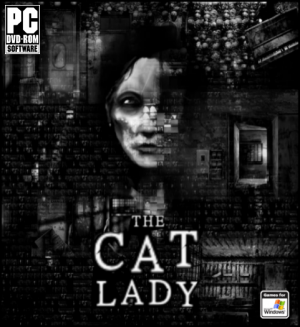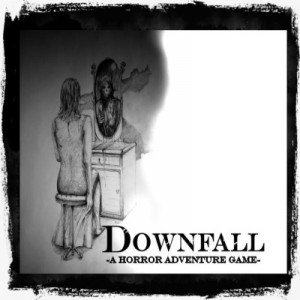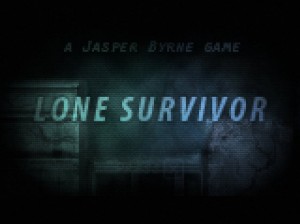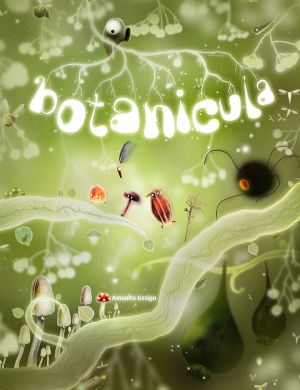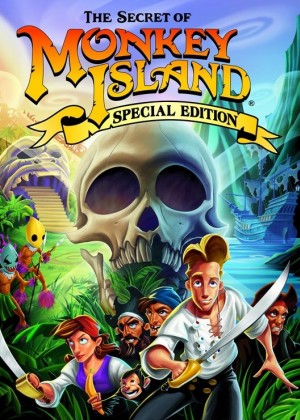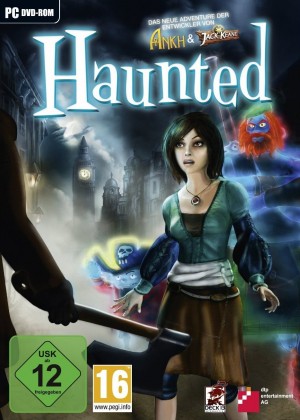Remigiusz Michalski - The Cat Lady interview - page 2
If you ever wished a horror game would meld the gore of classic "splatter" games like Harvester with more mature storytelling, indie developer Remigiusz Michalski is the right man for the job. Following his bloody but emotionally-charged debut title Downfall back in 2009, Michalski's new horror game The Cat Lady is about to spread its grisly madness worldwide. With the game's launch fast approaching, we had a chat with the man behind the horrors that have much more to offer under the surface than just extreme violence.
Ingmar Böke: Hi Remi. Thanks a lot for doing this interview. To get things started, I would like you to introduce yourself to our readers, as not everyone may be familiar with your work at this point.
Remigiusz Michalski: Hi, my name's Remigiusz Michalski, but here in England everyone calls me Rem. I was born in Poland and lived there until I was about 20, but for the last ten years I've lived in the UK. During that time I've gone through all sorts of jobs and kept climbing up, starting from the bottom of the ladder... Well, I still haven't got very far on that ladder, mostly because all I really want to do is make games, and that takes a lot of time when you haven't got money and a team behind you... But I had my first success with Downfall in 2009, and now, as my second game The Cat Lady is about to be released, things will change around here at last...
Ingmar Böke: At a time when very few adventures qualify as unique, The Cat Lady tells a story we haven’t seen before in a game. Tell us about the story and the main character.
Rem: The Cat Lady tells the story of Susan Ashworth. The whole game is centred around her life, who she is and why has she ended up in such a bad place in her life – alone and bitter, on the verge of suicide, with only a bunch of homeless cats from the neighbourhood to keep her company, coming up to her apartment whenever she plays the piano. Susan’s world, as perceived by her, is an ugly, horrible place to be – it appears to be broken down, decayed, ruined… and it’s populated by cold, hostile people trying to convince her there is no beauty or happiness to ever be found. But perhaps there is still hope? She holds on to that thought, trying to set her life back on track against all odds, when everything and everyone seems to be against her. There’s got to be someone she can trust. Even if it’s just one person – one person in a world full of liars, traitors and murderers…
Ingmar: The Cat Lady uses a completely different interface than Downfall. How are you using the new interface to create an even more immersive experience?
Rem: Like Downfall, The Cat Lady is still very much an adventure game, but all controls are moved onto the keyboard, the camera set to a side-scrolling view and all annoying pixel-hunting eliminated. You can only walk left or right, like in a platformer, and when you walk onto a hotspot its name is displayed on the screen right above it.
How is this beneficial for the game? First of all, the whole game was built around this interface. The gameplay mechanics and puzzles are very much connected, and when you actually push down a button to walk, like you do in third-person action games, it feels more like you’re actually there, like every step you make is a result of your direct input. It’s a much more immersive system and I believe it’s perfect for a horror game, where there are surprises waiting for you behind every corner.
Finally, it’s an ideal game to play on a laptop – unless you’ve got a mouse, touchpad controls can be a real pain in a point-and-click adventure game. The Cat Lady can be pretty much played with one hand, while you’re holding a cigarette or a mug of coffee in the other. Just got to warn you: Some scenes will really make you jump in your seat. Don’t get scalded!
Ingmar: It seems like The Cat Lady will be quite refreshing when it comes to its game mechanics.
Rem: Well, I think it is refreshing and I hope players will like it too. Watching YouTube playthrough videos of the demo, it seems the controls are easy enough to understand and become quite natural after a couple of minutes. The best thing about this interface is that it enables me to put in a lot of these region-triggered events that happen when you walk into certain areas. That can obviously be done in a traditional point-and-click interface, but it just doesn't have the same impact.
I wanted to make sure that things move from dialogues to puzzle solving sections and to action sequences constantly. There's one or two scenes that could be only described as Quick Time Events, but they're there mostly to surprise players and not to test their fingers. Also, every chapter in the game has its own unique identity. There are more than enough different locations and sudden shifts in the narrative to keep things exciting...
But most of all, I think I just wanted to do something different, you know? A little experiment. I played this game called Killer 7 a few years ago (which I managed to find in a tiny game shop at the end of town after a long search) and I was really excited to try it, because I'd always read so many good things about it, and how its interface was refreshingly new and weird... but when I finally played it, I hated it. So, these experiments can really backfire badly in some cases, and it's a risk that some people might feel like that about The Cat Lady's interface... but it can also prove successful and hopefully it's a risk worth taking. I certainly like it, and so far players' reactions have been largely positive.

Ingmar: What other new features have you added since the last game?
Rem: I'm really proud of the parallax effect and how much depth it adds to the visuals. Then the blur effects, and how all the cut-scenes run on the in-game engine and are integrated in the game, in a similar way to the Uncharted series, for example (however far-fetched that might sound). I was never a fan of pre-rendered cut-scenes in some adventure games... so I tried to avoid that kind of direction myself.
Ingmar: You’re using a very different visual style than last time. Tell us about the style you used in Downfall vs. the style you’re using in The Cat Lady, and why you felt it was necessary to give the new game a different look.
Rem: Oh, I definitely wouldn't want to make the same-looking game every time. That's the best thing about creating games! Being able to reinvent yourself and make something new every time you start a project! For me, these new ideas for the visual side of the game come mostly from experimenting with new techniques.
Downfall was all hand-drawn and I enjoyed doing those drawings a lot. But then, well, this is gonna sound silly, but... one day I lost my favourite pencil. That's the truth! And without it, I just lost interest in pencil sketches altogether. That was a good opportunity for me to learn new things, and soon I discovered that using 3D software for rendering backgrounds and character animation wasn't as complicated as I used to think. And it is so much fun too! To be honest, I much prefer this now, and I think it looks so much better.
The Cat Lady runs in a higher resolution, too. While not super-high by blockbuster game standards by any means, it's – correct me if I'm wrong – the first commercial AGS game to run at 800x600, and technically that brought its challenges with it as well. But the style of the game, the mixture of rendering, 2D art and photography – I think it looks good. I'm no Square Enix when it comes to rendering of course, but I think I managed to give the game a very dark, individual and polished look. Wait… I was wrong. Just remembered another high resolution AGS game: The Journey Down… So, anyway… Now there are two!
Ingmar: One of the main reasons why I really liked Downfall was its incredibly intense atmosphere, and judging by the material so far, the same can be said of The Cat Lady. Actually, I know how important the word "atmosphere" is to you so I’m interested in your approach to this subject, not only in The Cat Lady, but also in general.
Rem: Atmosphere is always what's most important to me, but playing games all my life, I've found that usually it's not enough without good gameplay to support it. There are some games that rely only on the atmosphere but besides that there isn't much else that players can enjoy, and that's obviously the wrong approach. While making The Cat Lady I learnt there are so many different ingredients to crafting the right atmosphere... The visual side is definitely extremely important but it needs to be complemented by the right sound design and music... and there are of course all those little things that some players might miss, small details that make the game's world come alive and feel complete.
Ingmar: The music in Downfall was a family affair, as your brother was responsible and you appeared in the outro song as well. What can you tell us about the new soundtrack?
Rem: Once again, my brother Michael has composed the music for the game. There are over 20 tracks that make for the core of The Cat Lady's soundtrack, but this time around, after receiving many emails from various musicians around the world who liked Downfall and wanted to be a part of this project, I included some new talents, too.
Have you ever played Red Dead Redemption? Well, there's a scene in there where you just ride through Mexico and suddenly this song by José González starts playing... That's one of my favourite moments in gaming ever. I wanted to do something similar, and since there were all these nice new artists that offered to help, I included a few songs in the game. Most of them are by my friend Jesse Gunn (known as Warmer, which is his stage name), who also voiced Joe Davis in the demo and allowed me to use one of his tracks in the first Cat Lady trailer, and his music is incredibly atmospheric and genuinely emotional. Then there's a short piece by Jamo Markwell, a young guy I met when he was busking on the Exeter high street and selling his home-recorded album to the crowd. And finally, there's Josiah Orsie, the lead singer of Tears Of Mars. If they're not one of the biggest rock bands on the planet in the next few years, I'll bloody eat my shoes! Because they're just absolutely fantastic! So, overall, there are about 30 tracks in the game. Music is a big thing for me...
Ingmar: The following statement you made last year tells us something about your approach as a writer: “Another thing I always keep in mind is what Stephen King said once, giving advice to all wannabe horror writers, to tell stories about things they know.” Well, in case of The Cat Lady, we’re dealing with very strong themes like suicide and depression. Why did you choose those particular themes for the game, and in what way is The Cat Lady another personal game like Downfall?
Rem: Depression's the illness of our times. It seems it affects more people than we'd think... But let me make it clear – I hate when sometimes it's used as a word to express how someone's having a bad day. That happens to all of us – it's a normal human emotion to feel sad or upset, but most of us are able to shake it off and get on with their lives. The problem starts when you can't get out of that horrible state of mind and you realize that you are, in fact, ill. How do you prove to others that this is what's happening to you? It's invisible, it's this dark cloud inside your head that makes you perceive reality differently... like there is no hope and nothing good is ever going to happen to you. Now, I'm not suffering from depression myself, but for reasons I shouldn't really mention it has been a big part of my life for many years now. I know it very well. Me and her... we've been good friends for a long time. Enough to understand how badly it can mess up your life.
Ingmar: Many great writers use personal experiences in their stories as a kind of self-therapy. Do you feel like dealing with certain personal issues in your stories helps you to get over things and perhaps find closure?
 |
Rem Michalski |
Rem: Very much so. It seems going through life I've encountered some of the worst stuff there is... Without games as my outlet, I don't think I'd be able to cope with all this. I remember years ago, just before I started making Downfall, I was in this really bad place in my life, when I had no money and lived in a crappy staff accommodation, which I shared with about ten other people. I'd go to work every day and since that didn't require much brain-power (I was a cleaner then) I'd keep my mind occupied making up stories I'd later use in Downfall. That made it all bearable, you know? That's how I got through it and this is the best way I know to deal with my problems.
Ingmar: A lot has changed for you lately, as you became a father not long ago. In what way has your life changed, and how does life feel differently now?
Rem: When I started work on The Cat Lady I didn't even know I'd soon be a father... Now, more than three years later, there is this little boy running around, turning our lives upside down and causing mischief, like kids do. This has definitely been a challenge. I've only been able to use the computer at night, partly because kids tend to want all your attention and as soon as you sit down to do something else, they start climbing on you and suddenly they have so much to say to you... but also, there is a lot of disturbing imagery in The Cat Lady, which I didn't necessarily want him to see!
Just wanted to add, my son's name is Gabriel. I'm sure I don't have to explain which famous Gabriel he was named after?
Ingmar: When people talk about your last game, the word "gory" is one of the first descriptions. Does it frustrate you that some people may be into your games primarily because of the gore and ignore the fact that they actually have a lot more to offer under the surface?
Rem: No, I've never come across that myself. Downfall was a very niche game, and most of those who found it enjoyed it for its other values. There are a whole lot of people who haven't even come across that title, because it's not been advertised or marketed very well (one of those mistakes I'm trying to learn from). So, it was very much a game for people who research strange little indie projects like mine and want to try something new. Those who play games just for the gore have such a rich catalogue to choose from that surely they don't need to bother with adventure games! Then again, I can't see why gore and a good story couldn't combine well together!!!
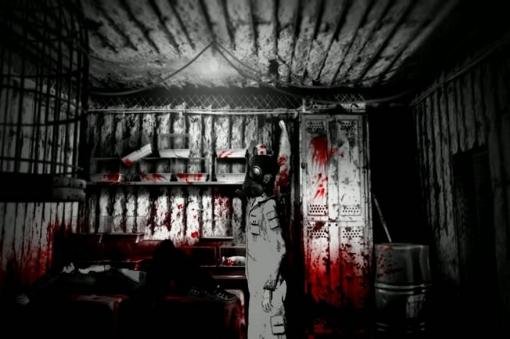
Ingmar: From what I've heard, a good story seems to be one of the last things a traditional adventure game publisher is interested in when you approach them. Instead, they’ll ask you if there are any successful adventures out there that are similar to your project. With that attitude, it seems nearly impossible for the bigger adventure game projects to offer a personal experience with depth, leaving the creative power in the hands of the small indie studios. What’s your take on this issue and how comfortable do you feel with your own role in this “game”?
Rem: I guess that's how it is these days... But I'm certainly not aiming to fight the Goliath with my games – I do enjoy mainstream games myself, even though it does feel like all the big guys with the money can't get into their thick skulls that the same thing can't and shouldn't be repeated over and over again. If they asked me what The Cat Lady is similar to, I wouldn't know what to say, really... And that'd be the end of the conversation.
But the thing is, I'm not really dealing with that sort of publisher at the moment. I've been very lucky to collaborate with Screen 7, because they know from first-hand experience what the indie scene is all about. And because they've only recently launched their business, it's a bit like we are both learning from each other. Yeah, it would be nice to have Cat Lady TV ads and billboards all over Europe and the backing of a huge publisher, but it's just not going to happen. Or if it will, then it won't be very soon. Perhaps one day people will finally get fed up of being served the same Call Of Duty clone every time a new game comes out?
Ingmar: I know you grew up with games like Monkey Island. Isn’t it bizarre when people talk about adventure games and still state that Monkey Island represents everything an adventure game should be like today? For someone who loves mature themes, it seems hard to deal with such a notion. What’s your opinion on what I like to call the “Guybrush Threepwood syndrome”?
Rem: The "Guybrush Threepwood syndrome" describes it perfectly! This is exactly what's happened to adventure games, and obviously Guybrush isn't to blame for it, nor is LucasArts, but it's kinda stupid trying to repeat their success not by learning from the overall structure of the game and what its strengths were, but mimicking it like it's some kind of ultimate formula for what makes adventure games brilliant. This is not a way to do it! We all have very fond memories of Monkey Island but I'd like to keep them what they are – memories. There is definitely room for "different" adventure games. Heavy Rain has proven it – I loved that game to bits. The Walking Dead is a big commercial hit, too, and it really deserves all the success it's achieved.
Ingmar: Out of the big horror adventure classics like Phantasmagoria, Harvester, Dark Seed and others... did any of them leave an impact on you?
Rem: Out of the three you mentioned I only played Dark Seed as a kid, and that was absolutely life-changing. I remember being really scared when you receive a package and there's that creepy doll inside... But most of all, that game mechanic, in which you had two mirror-like versions of the world, that's what really stuck in my memory and it's something I used in my games, to certain extent. The other horror games that have had a great influence on what I'm doing are Elvira 2: Jaws of Cerberus and Waxworks. There are numerous references to both of them in Downfall, although no one seems to remember those games anymore...

Ingmar: Tell us about your journey from being a simple fan to becoming a developer.
Rem: It seems I've always been making games one way or the other... To me, the breaking point was finding Adventure Game Studio and realizing that I don't actually have to be an egg-headed genius to program a game! From that moment it was very clear that no matter what, I wanted to make games for a living. Now, this hasn't happened yet – I still have my day job (well, more like a "night job", since I mostly work night shifts). But this little dream of mine, it will never go away. I don't dislike my job (male nurse at the local hospital) and I think I'm actually pretty good at it... but this isn't me. Hopefully, in what follows the release of The Cat Lady, I will be able to hand in my resignation and make this dream come true!
I could be just fooling myself, but believing that has been one of the main reasons I put so much work into making this game. Not trying to sound like Peter Molyneux, but I strongly believe this is actually the best game anyone could ever make with no budget at all, and in years to come, hopefully we will be discussing not Guybrush Threepwood's but Cat Lady's syndrome! And by then, I will finally have my own office with an oak desk and black curtains and no managers to answer to...
Ingmar: Downfall was your first commercial project. Please give us an idea of the ups and downs you went through during its creation. Have things become easier in the meantime because of the lessons you learned with that game?
Rem: That was my first step into the world of commercial games – it was all new! There was this guy, Mike, who was at the time an acquisition manager at Direct2Drive who guided me through the whole process and believed in me and my game. That felt good, because I wasn’t that confident myself.
When Downfall got published, I thought for a while that I'd suddenly got very lucky and I could do anything. That wasn’t the case, obviously, but at some point I was even having lunches with a film director, discussing the possibility of making a movie script based on the game! I guess he must’ve realized there was already a film called Downfall and gave up on this project... Ha, ha – but it was fun enough just trying to imagine Joe Davis on a big screen!
There were many different deals with different publishers. Some were brilliant, some were pretty unfair, but it’s all part of being a newbie and that’s how you learn. I can only try to not to make the same mistakes twice. Now that Harvester Games is a little more established, I am finally in a position where I can actually say no to some people... but still, this is the worst part of the whole process. I love making games, but I’m no businessman.
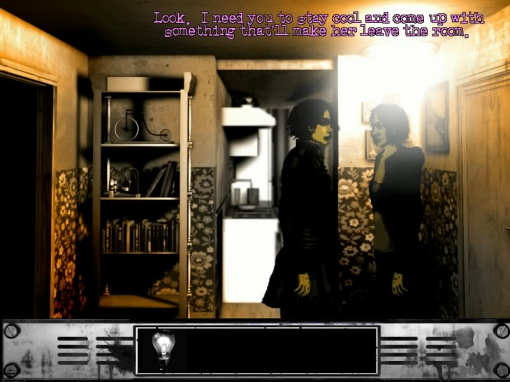
Ingmar: You still work from your living room and have a daily job. Please talk about the challenges of this approach, and how you’re able to stay focussed.
Rem: I’ve already told you about my son and how he climbs up on me as soon as I sit at the computer… Now, as every parent knows, sleep is something you miss terribly in those early years. Because the only time I could do anything was at night, I’d often stay up until 3-4 am, sleep for a couple of hours, get up to get that bottle ready, change some nappies, then go to work, come home and repeat everything again… As rewarding as it is to be a parent, it sometimes makes you question whether you’ll ever be able to realize your other goals in life, because there really isn’t much room for anything else. I did my best to try not to give up on The Cat Lady, and I hope I’ve been a good dad in the meantime. Hopefully, soon I’ll be able to get some sleep, too!
Ingmar: Let’s say a big developer approaches you and says that they love your work and they want you in their team. Is that something you would consider doing or do you definitely prefer sticking with how things are to maintain your creative freedom and (perhaps) integrity?
Rem: I would probably say yes. It’s not like I’d be selling my soul to the devil or something… But to be surrounded all day with like-minded people who love games seems like a great life! Unless they’d be making some kind of Mickey Mouse game… I couldn’t bear that, to be honest. Or something for an iPhone… You know, maybe I’d actually think about it long and hard first. But – just in case some big developer is reading this – if it was an interesting, original project, I’d most likely give it a go. I often wonder, though, since for over six years I’ve been working on pretty much every aspect of my games, which one would I feel most comfortable with if I had to choose one?... I have no idea to be honest.
Ingmar: As a developer yourself, do you still enjoy playing adventure games of others as a fan? Any recent adventures you played and enjoyed?
Rem: I played quite a few, but got bored of most of them. When did adventure games get so damn boring? Sure, they look pretty, but that’s not enough! I don’t limit myself to adventure games only, though. I did enjoy Lone Survivor recently (still playing it, and in a way it’s a bit like an adventure game, too) and Dear Esther, I must say, was rather brilliant. I wish there were more games like it!
Ingmar: You’re known as a big fan of Stephen King. What is it that fascinates you about his work?
Rem: I started reading his books very early in life. I was also really fascinated by films based on them – although most of them were absolutely terrible, there were few good ones too (It, Misery, The Shining). I read Under The Dome this summer, and God, he just gets better as years go by! I guess what I’d really like to achieve is to one day become for games what Stephen King has been for books for the last few decades; some sort of instantly recognisable authority, a guru, a “king”…
Ingmar: Did any of the old-school horror heroes like Lovecraft, Stoker and Poe have a similar influence on you?
Rem: I tried reading those guys when I was younger, but didn’t really get them. It was a long time ago, in a whole other life. Maybe I should actually give them another chance?... Then again, there are so many young writers, I’ll never have enough time to catch up on what’s being written now!
Ingmar: Do you already know what project you’ll be working on after The Cat Lady? Anything you can tease about the direction you will take?
Rem: To be honest, I haven’t really got any solid plans. I’ve had a few ideas… Been thinking for a while what it’d be like to make a Blackwell game with Wadjet Eye Games – I never actually asked Dave Gilbert if he’d even consider such collaboration, but I just thought it would be fun to make some kind of parallel story about Rosa and Joey that combines his trademark dialogue style and characters with Harvester Games’ raw horror… What is actually more likely to happen is me finally making a game with my brother. Instead of him being just in charge of the music, we've discussed how he could get more involved, and that would be great, because, well, he's an extremely talented artist, and we've always been able to understand each other without words, the way only brothers can.
Ingmar: Again, thanks a lot for your time, Rem. It was a pleasure to share your views and we’re looking forward to the release of The Cat Lady!



